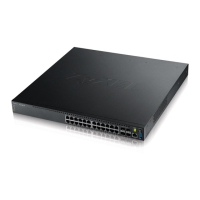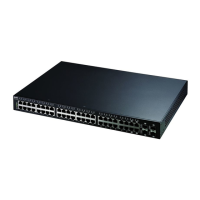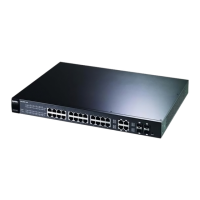Chapter 21 Queuing Method
GS3700/XGS3700 Series User’s Guide
217
Figure 146 Advanced Application > Queuing Method (Stacking mode)
The following table describes the labels in this screen.
Table 92 Advanced Application > Queuing Method
LABEL DESCRIPTION
Slot
(Stacking
mode)
This field appears only in stacking mode. Click the drop-down list to choose the slot number of
the Switch in a stack.
Port
(Standalon
e or
stacking
mode)
This field displays the port number. In stacking mode, the first box field is the slot ID and the
second field is the port number.
* Settings in this row apply to all ports.
Use this row only if you want to make some settings the same for all ports. Use this row first to
set the common settings and then make adjustments on a port-by-port basis.
Note: Changes in this row are copied to all the ports as soon as you make them.
Method Select SPQ (Strictly Priority Queuing), W FQ (Weighted Fair Queuing) or W RR (Weighted Round
Robin).
Strictly Priority services queues based on priority only. When the highest priority queue empties,
traffic on the next highest-priority queue begins. Q7 has the highest priority and Q0 the lowest.
Weighted Fair Queuing is used to guarantee each queue's minimum bandwidth based on their
bandwidth weight (the number you configure in the W eight field). Queues with larger weights
get more guaranteed bandwidth than queues with smaller weights.
Weighted Round Robin Scheduling services queues on a rotating basis based on their queue
weight (the number you configure in the queue W eight field). Queues with larger weights get
more service than queues with smaller weights.
Weight
Q0-Q7
When you select W FQ or WRR enter the queue weight here. Bandwidth is divided across the
different traffic queues according to their weights.

